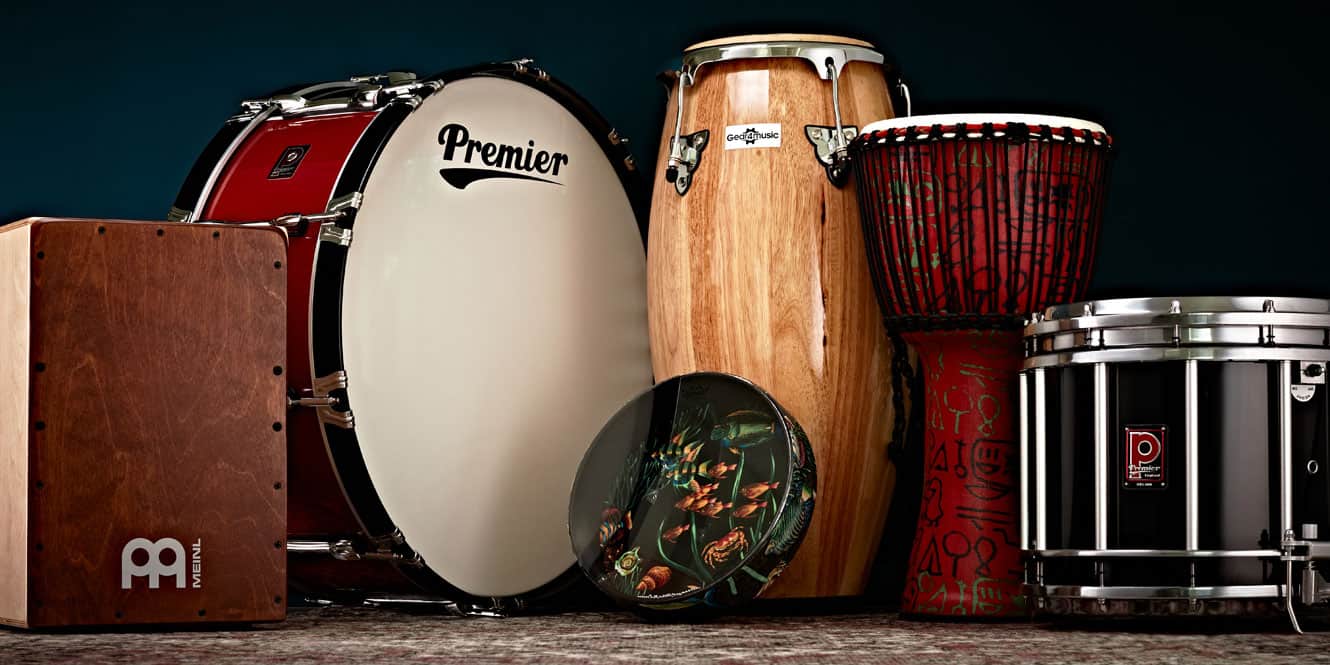Introduction
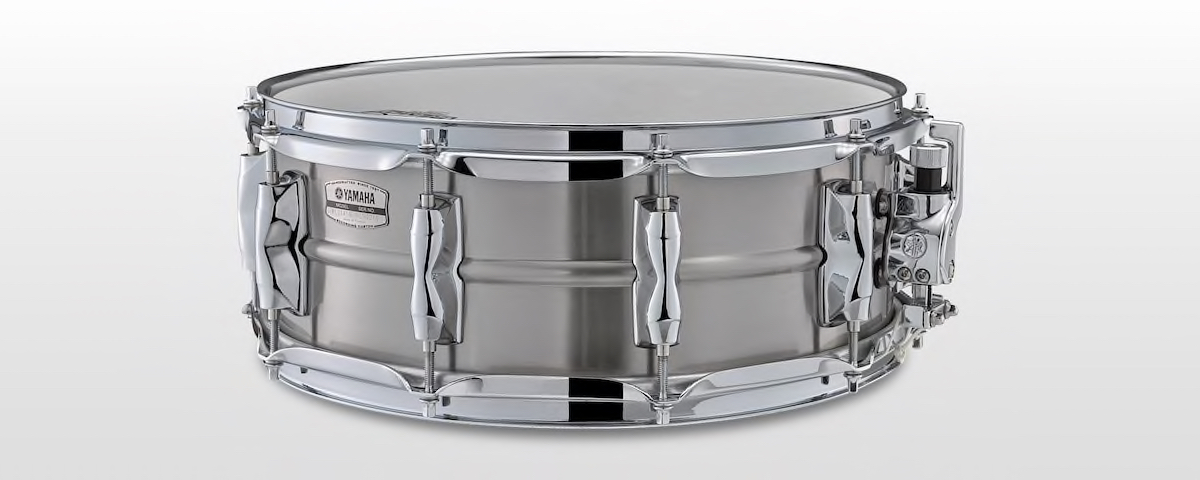 The drum, an instrument as ancient as civilization itself, has been the heartbeat of music across all cultures and eras. From the ceremonial karyenda of Burundi to the modern electronic drum kits, the evolution of drum types is as diverse as the music they create. Drums have not only provided rhythm to songs but have also played a crucial role in communication and rituals, echoing through history with every beat. This comprehensive guide delves into the various drum types that have shaped musical landscapes and continue to inspire musicians worldwide.
The drum, an instrument as ancient as civilization itself, has been the heartbeat of music across all cultures and eras. From the ceremonial karyenda of Burundi to the modern electronic drum kits, the evolution of drum types is as diverse as the music they create. Drums have not only provided rhythm to songs but have also played a crucial role in communication and rituals, echoing through history with every beat. This comprehensive guide delves into the various drum types that have shaped musical landscapes and continue to inspire musicians worldwide.
Whether it’s the deep resonance of a bass drum in an orchestra, the sharp snap of a snare in a marching band, or the rich tones of hand drums in a traditional ensemble, each type of drum brings its unique voice to the table. Understanding the different drum types is essential for any musician or enthusiast looking to deepen their appreciation of this versatile instrument. As we explore the acoustic, electronic, and hand drums, we’ll uncover the characteristics and uses that make each one stand out in the symphony of percussion instruments.
Acoustic Drums
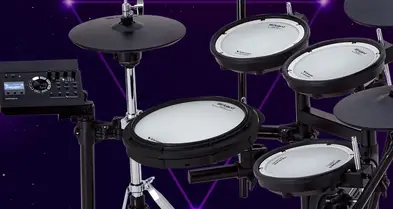
Bass Drum
At the core of the acoustic drum set lies the bass drum, a powerhouse that anchors the rhythm with its profound and resonant beats. Often constructed from high-quality woods like maple or birch, the bass drum’s size can range from 18 to 24 inches in diameter, allowing it to adapt to various musical genres, from the pulsating drive of rock to the subtle undertones of jazz. Played with a foot pedal that strikes the drumhead, the bass drum produces a deep, booming sound that is fundamental to the structure of many compositions, setting the tempo and adding depth to the overall sound of the ensemble.
As the largest drum in most kits, the bass drum’s presence is not just auditory but also visual, often serving as the focal point of a drum set. Its versatility is further showcased in different configurations, such as the 22 x 18-inch bass drum commonly found in power or rock drum sets, which delivers a louder and deeper tone, or the shallower 14-inch depth bass drums in jazz kits that offer a brighter, more responsive sound. The bass drum’s ability to blend with other percussion elements, like the crisp hi-hat or the thunderous crash cymbal, makes it an indispensable component of the acoustic drum family.
Snare Drum
Transitioning from the thunderous bass, the snare drum steps in with its distinctive cracking sound, cutting through the mix with precision. Integral to the acoustic drum set, the snare is renowned for its sharp, crisp tones that provide the backbeat to countless genres. Crafted from a variety of materials, including wood and metal, the snare drum typically ranges from 13 to 15 inches in diameter, offering a wide array of sonic possibilities. Its responsive nature, achieved by the tensioned wires or “snares” stretched across the bottom head, allows for a dynamic range that can articulate everything from a subtle ghost note to a commanding accent.
Snare drums are not only pivotal in rock and pop settings but also serve as the rhythmic cornerstone in orchestras and marching bands. The versatility of the snare is further exemplified by its various types, such as the deeper-toned 6 x 14-inch snare found in rock kits, or the more compact snares used in fusion setups that facilitate rapid, intricate playing styles. Regardless of its size or the material it’s made from, the snare drum remains an essential voice in the acoustic drum ensemble, driving the groove and energizing the beat.
Toms
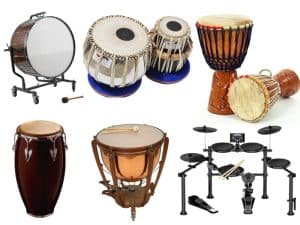
Complementing the bass and snare drums, toms add melodic and rhythmic layers to the acoustic drum set, enriching the soundscape with their varying pitches and tones. Constructed from the same quality woods, such as birch or maple, toms come in a range of sizes from the compact 6-inch rack tom to the robust 20-inch floor tom. Each tom serves a unique purpose: the rack tom delivers an open, resonating sound that can sing over the mix, while the floor tom provides a low, booming sound with a deep tone, second only to the bass drum in size and depth.
Acoustic drum sets often feature a combination of these toms, with configurations tailored to specific genres. Power or rock drum sets typically include larger toms, such as 12, 13, and 16-inch diameters, producing deeper tones and higher volumes, ideal for a commanding presence in louder music settings. In contrast, fusion drum sets favor smaller toms, like 10, 12, and 14 inches, offering a faster response for intricate playing styles. Jazz drum kits, known for their quick and light feel, may utilize toms with similar diameters to fusion sets but with shallower depths for a brighter sound. This versatility ensures that toms are an integral part of the drummer’s toolkit, adaptable to a wide range of musical expressions.
Electronic Drums
Pad Controllers
Stepping into the realm of electronic drums, pad controllers are an innovative addition to the percussionist’s arsenal. These compact and versatile devices serve as the interface for triggering a variety of electronic sounds, from drum beats to complex samples. Unlike traditional drumheads, pad controllers are typically made from rubber or other responsive materials, providing a unique playing experience that can be tailored to the drummer’s touch. They are essential for drummers looking to expand their sound palette, offering the ability to integrate electronic elements into their performances seamlessly.
Pad controllers come in various shapes and sizes, with some designed to be played with sticks and others optimized for finger drumming. They can be standalone units or part of an electronic drum kit, allowing for a customizable setup that caters to individual playing styles and genre requirements. With the integration of MIDI technology, pad controllers can also be connected to computers and other devices, unlocking a world of digital sound manipulation and recording possibilities. This makes them a powerful tool for both live performances and studio work, where precision and variety are paramount.
Electronic Drum Kits
Revolutionizing the percussion world, electronic drum kits have become a staple for musicians seeking a vast array of sounds and the convenience of modern technology. These kits, which can range from basic to professional levels, are equipped with rubber or mesh pads designed to mimic the feel of traditional drumheads. The versatility of electronic drum kits allows drummers to emulate a classic rock set, delve into the world of world percussion, or craft entirely new sounds, making them suitable for genres as diverse as pop, rock, jazz, and electronic music. Brands like Roland, Yamaha, and Alesis are at the forefront, offering kits that work with interactive software and apps, providing tutorials and expansive sound packs for an immersive drumming experience.
Electronic drum kits are not only about the sound; they also offer practical benefits. The ability to practice silently is a godsend for those sharing living spaces, while the portability of these kits makes them ideal for gigging musicians. Played with traditional drumsticks and foot pedals, they offer a familiar feel for acoustic drummers transitioning to electronic setups. Moreover, the integration of MIDI technology in some kits opens up a world of digital creativity, allowing for dynamic control and customization that can elevate live performances and studio recordings alike. With such adaptability, electronic drum kits have cemented their place as a dynamic and essential tool for contemporary drummers.
Hand Drums
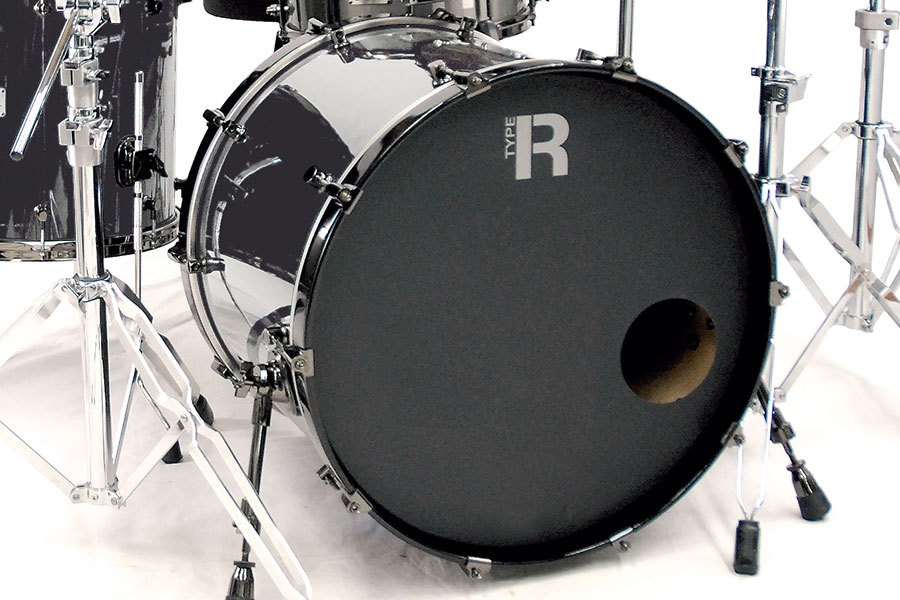
Bongo Drums
As we explore the diverse family of hand drums, bongo drums stand out with their distinctive Afro-Cuban origins and compelling sound. These small, yet powerful drums are traditionally played in pairs, with one drum slightly larger than the other—known as the “hembra” (female) and “macho” (male), respectively. Bongos are celebrated for their high-pitched, sharp tones that cut through the mix, making them a favorite in genres like salsa, jazz, and Afro-Cuban music. Their compact size and the fact that they are played with the fingers make bongos an accessible instrument for drummers of all skill levels, from beginners to seasoned professionals.
Not only do bongos add rhythmic complexity to musical arrangements, but they also serve as a portable and versatile percussion option. Whether accompanying congas in a rumba ensemble or adding flair to a solo performance, bongos provide a unique sound that is both rhythmic and melodic. Their ease of transport and the ability to be tuned for different musical settings make them an excellent addition to any percussionist’s collection. For those looking to enrich their percussion skills or add an authentic Afro-Cuban element to their music, bongos are an indispensable choice.
Djembe
The Djembe, a goblet-shaped drum hailing from West Africa, is renowned for its rich cultural heritage and powerful sound. This hand drum is traditionally crafted from hardwood and topped with an animal skin head, which is rope-tuned to achieve a wide range of tones. Played with bare hands, the djembe is capable of producing a variety of sounds, from deep bass to ringing slaps, making it a versatile instrument in both traditional African music and contemporary genres. Its presence in a musical ensemble adds a vibrant, pulsating energy that is unmistakable.
Djembes are not only musical instruments but also carry a deep social and spiritual significance in their cultures of origin. They are often featured in community events, celebrations, and ceremonies, symbolizing unity and communication. The djembe’s adaptability has led to its popularity worldwide, finding a place in modern musical compositions, drum circles, and educational settings. For percussion enthusiasts and professional drummers alike, the djembe offers a connection to the roots of rhythm and an expressive voice in the tapestry of world music.
Conga Drums
Following the rhythmic journey through hand drums, conga drums emerge as a cornerstone of Afro-Cuban music with their deep, resonant tones and rich cultural history. These tall, single-headed drums are traditionally played in sets of two or three, each drum offering a distinct pitch to create a harmonious blend. Congas are classified by size into the quinto, conga, and tumba, with each drum contributing to the overall depth and complexity of the sound. Ideal for styles such as salsa, rumba, and Afro-Cuban jazz, conga drums are a testament to the vibrant musical traditions of Cuba and are a must-have for percussionists aiming to capture the essence of Latin rhythms.
Whether integrated into a full band setting or played as a solo instrument, congas have the power to captivate audiences and compel movement. Their versatility extends to various levels of play, from beginners who are just discovering the joy of hand drumming to advanced players perfecting their technique. The conga drum’s ability to produce a wide range of dynamic sounds makes it a dynamic and expressive instrument, perfect for live performances where the goal is to get people dancing and feeling the music. For those seeking to add a touch of authenticity and energy to their percussion repertoire, congas are an excellent choice.
Conclusion
 From the thunderous bass of the acoustic drum sets to the digital precision of electronic kits, and the warm, organic tones of hand drums like djembes and congas, the world of percussion is as diverse as it is dynamic. Each type of drum carries its own story, a unique sound that echoes the traditions and innovations of cultures around the globe. As we’ve explored the various drum types, it’s clear that these instruments are more than just tools for keeping rhythm; they are vessels of expression, integral to the fabric of music across all genres.
From the thunderous bass of the acoustic drum sets to the digital precision of electronic kits, and the warm, organic tones of hand drums like djembes and congas, the world of percussion is as diverse as it is dynamic. Each type of drum carries its own story, a unique sound that echoes the traditions and innovations of cultures around the globe. As we’ve explored the various drum types, it’s clear that these instruments are more than just tools for keeping rhythm; they are vessels of expression, integral to the fabric of music across all genres.
Whether you’re a seasoned musician or a curious newcomer, the array of drum types offers a rich palette to explore. The versatility and universal appeal of drums have cemented their place in the annals of musical history and continue to inspire new generations of players. As we conclude this rhythmic odyssey, may the beat go on, resonating with the pulse of human experience and the endless possibilities that drums present to the world of music.
Sources:
FAQ
Q1: What are the main types of drums? A1: Drums come in various types, including acoustic drums, electronic drums, snare drums, bass drums, tom-toms, and specialty drums like djembes and congas.
Q2: What is the difference between acoustic and electronic drums? A2: Acoustic drums produce sound through physical vibrations, while electronic drums use sensors to trigger digital samples. Acoustic drums offer a traditional feel, while electronic drums provide versatility in sound and often have features like built-in sounds and connectivity options.
Q3: How do I choose the right drum type for my needs? A3: Consider your musical style, preferences, and playing environment. Acoustic drums are great for live performances, while electronic drums are suitable for versatile sound options and quiet practice.
Q4: What is the role of snare drums in a drum kit? A4: The snare drum is a central component of a drum kit, providing a sharp and distinct sound. It’s often used for accents, backbeats, and dynamic elements in various music genres.
Q5: Can I use specialty drums like djembes in different music genres? A5: Absolutely! While djembes have traditional roots in African music, they are versatile and can be incorporated into various genres, adding unique percussive elements to your sound.
Q6: Are there specific considerations for maintaining different drum types? A6: Yes, maintenance varies. Acoustic drums may require tuning, while electronic drums need occasional sensor cleaning. Specialty drums may need specific care depending on the materials used.
Q7: What are some popular drum kit configurations for different styles of music? A7: Drum kit configurations vary based on musical genres. For example, rock drummers often use larger kits with more toms, while jazz drummers may prefer smaller, more focused setups.
Q8: Can I mix and match drum types in a drum kit? A8: Yes, many drummers customize their kits by combining different drum types to achieve a unique sound. Experimenting with drum combinations allows for a personalized and distinctive playing experience.
Q9: Are there specific drum types suitable for beginners? A9: For beginners, a standard five-piece drum kit with a bass drum, snare drum, two rack toms, and a floor tom is a common starting point. It provides a well-rounded foundation for learning drumming basics.
Q10: Where can I find more information about drum types and their characteristics? A10: Drums.Top offers comprehensive guides, reviews, and resources to help you explore and understand different drum types. Additionally, joining drumming communities and seeking advice from experienced players can provide valuable insights.
Originally posted 2023-11-14 03:05:53.

